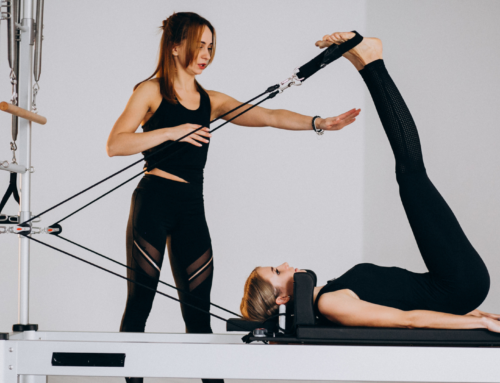Having a disc bulge is not a life sentence. It’s important to remember that you can definitely recover from it. However, it does depend upon the severity of the disc bulge. There are 4 different stages of a disc compression when the injury happens. Although I am not going to discuss them in detail here, it’s worth knowing that physiotherapy can help with recovery in all of those stages of the disc bulge. In fact physiotherapy is the main form of treatment even if you end up getting a surgery for a sever case of disc injury. Needless to say that the recovery will be quicker and more effective if you get started in the early stages. Whether you’ve injured yourself lifting at work or had a car accident or perhaps you have a job that requires you to do prolonged sitting, getting your treatment started early is crucial. And you don’t even need a referral to see a physio if it’s not a work related or accident related injury. So here’s how physiotherapy will help in treating the disc bulge.

Reducing the disc bulge to relieve pain
Disc bulge is so common in the lower back and even the neck! Discs are literally made up of a gel like substance surrounded by a thick fibrous ring and sandwiched between the bones of the spine. They act like shock absorbers whenever there’s added pressure on the spine. For example, when you’re lifting something heavy or bending over from the back. Usually the disc is will absorb the pressure. But, if this happens repetitively or there’s trauma, the gel like substance can come out of it’s place and bulge through that fibrous layer. This is exactly what a disc bulge is. This in turn creates swelling and inflammation around the structures of the spine, causing pain. Sometimes the disc bulge can irritate a nerve causing shooting pain down the leg. Heard of sciatica?
Physiotherapy helps in relieving that swelling or inflammation by getting movement into the joints. We do this with simple rhythmic oscillations to the spinal joints which promote blood flow to the area and washe away the swelling. Thus, relieving pain. Now I am explaining this in very simple terms so you can understand the effects of manual therapy (hands on ) treatment on the body.
Releiving the muscle spasm around the spine due to the disc bulge

You know those spasms you might feel when you go to move? Anyone who has experienced a disc bulge knows exactly what I’m talking about. It’s like the muscles grab you and stop you from doing the activity. And that grab itself can be so painful! It’s actually just a normal reaction of the body after an injury. The muscles try to protect your joints from further swelling and literally will stiffen to stop you from going further. However, this unfortunately can get into a vicious cycle the longer you leave the disc bulge untreated.
Physiotherapy helps in relieving that muscle spasm by doing gentle deep tissue massage or trigger point therapy to ease those knots in the muscles. We use manual therapy techniques to ease the muscle tension which in turn will give you better movement in the spine.
Strengthening the core muscles around the disc bulge to prevent future issues

The most long term solution will be to not only get rid of the pain and swelling but also get the muscles around the spinal joints to get stronger so this doesn’t happen again. Of course if the disc bulge was because of trauma , it’s not under your control but you can certainly make the muscles strong for full recovery from the injury. We as physiotherapists focus on the long term solution and prescribe the right core strengthening and core stability exercises to prevent future issues. It’s not about lifting 100 kilos in the gym. It’s actually about engaging your deep muscles in the tummy and back which get weakened due to the disc bulge. And reformer pilates is a great way of ensuring that. I actually find reformer pilates extremely useful in the recovery phase from back pain due to a disc bulge. Not just that it works wonderfully for women in the post partum phase too! So once the muscles are strengthened up, they will be able to protect your back well.
It’s important that these exercises become a part of your routine and the advice that we give regarding modifying your activities and environment is also paramount to full recovery and long term results.
If you or anyone you know is suffering from a disc bulge, please get your treatment started straight away by clicking on the link below.






